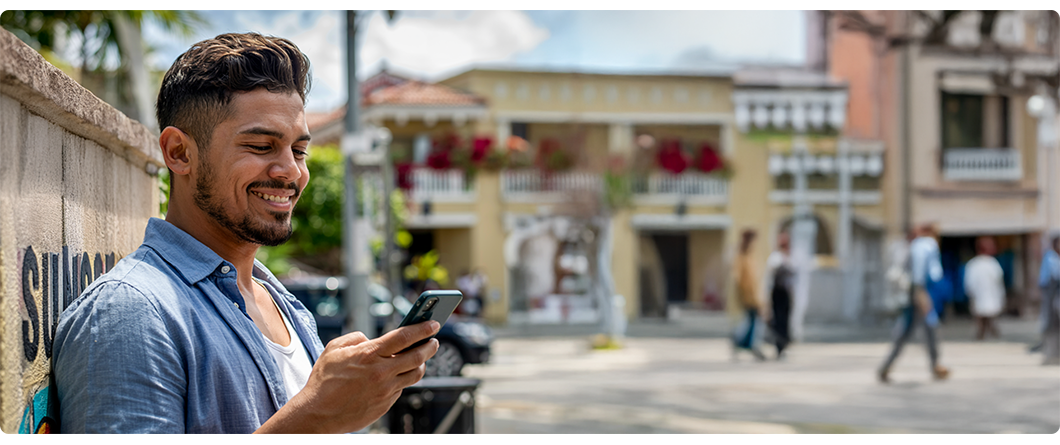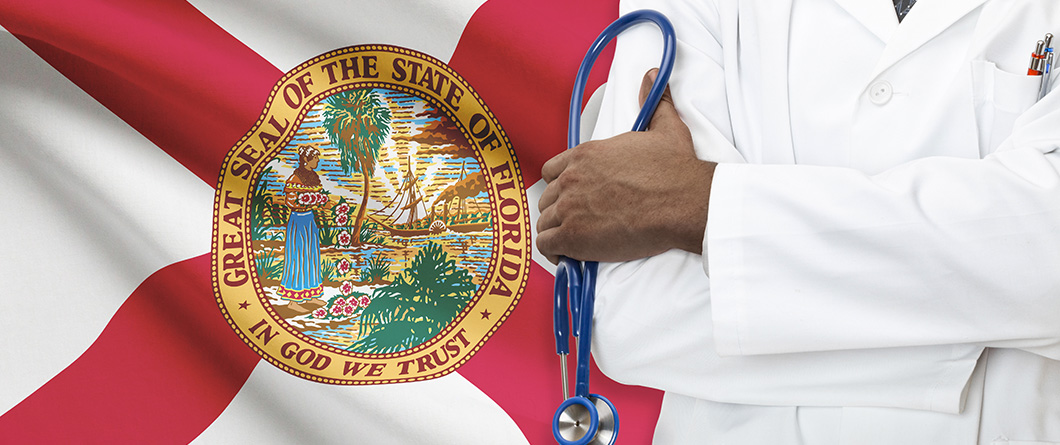
From Data to Action: Measuring and Evoking Impact with Behavioral Change in Public Health Campaigns
Imagine a public health ad that doesn’t scare you into change but empowers you to make it. Picture a bus shelter poster where a young Floridian proudly declares, “I protect myself,” inviting others to do the same – not out of fear, but out of confidence and hope. This is the new face of public health outreach. In recent years, the Florida Department of Health (FDOH) has embraced data-driven strategies to transform its HIV prevention messaging from traditional fear-based appeals into sex-positive, empowering communication. The result: campaigns that not only engage audiences at unprecedented levels, but also foster genuine behavioral change.
In this post, we explore three core FDOH campaigns – “I Protect Myself,” “I Can,” and “I Live Fully” – as case studies in moving from data to action. We’ll see how each campaign leveraged research and metrics to evolve outreach from stigmatizing warnings to authentic, culturally competent storytelling. We’ll dive into the numbers (like soaring click-through rates and website visits) that demonstrate impact, and the behavior change marketing principles (transculturation, community input, real-life storytelling, and more) that made it possible. Along the way, we’ll also highlight the role of behavior change workshops in equipping teams and partners to carry these messages forward. The goal is to provide public health professionals and marketers alike with an engaging narrative and strategic lessons on turning data into action, and action into impact.
Data-Driven Outreach: A New Paradigm in Public Health Marketing

Public health campaigns have not always been data-driven or audience-centric. In the past, it was common to see fear-based messaging – grim warnings intended to shock people into healthier behavior. However, mounting evidence has shown that such tactics can backfire. Research indicates that sex-negative, stigmatizing messages may actually decrease the likelihood of individuals engaging in prevention behaviors like HIV testing, PrEP uptake, or regular care. In Florida, where HIV disproportionately affects Black and Hispanic communities, traditional fear appeals were found to alienate priority populations and reduce message effectiveness. Data and community feedback were telling health officials a clear story: a new approach was needed.
Enter behavior change marketing. FDOH adopted a social marketing and behavior change model for its campaigns, meaning every strategy was grounded in research and iteratively tested. Instead of blasting out one-size-fits-all slogans, the department used data to understand its audiences – from epidemiological stats to psychographic insights about attitudes and beliefs. This data informed everything: which communities to prioritize, which languages to communicate in, what cultural values to uphold, and even which media channels to use. Community input and focus groups became integral to campaign design, ensuring messages resonated with real lived experiences rather than top-down assumptions.
Most importantly, FDOH shifted the tone of its messaging. Rather than emphasizing fear or shame (e.g. “HIV is deadly, protect yourself!”), the new campaigns emphasized empowerment, positivity, and personal agency. The underlying philosophy: encourage healthy behaviors by showing how they enable people to live better lives, not just avoid negative outcomes. As we’ll see, this meant embracing a sex-positive approach – openly talking about sexual health in affirming ways – and placing the audience member in the hero’s role (“I can protect myself, I can take charge of my health, I live fully…”). This dramatic paradigm shift from defensive messaging to aspirational storytelling was bold, but data would soon prove it was highly effective.
Before diving into each campaign, let’s outline a few key behavior change principles that guided FDOH’s strategy:
- Transculturation over Translation: Rather than simply translating English materials into Spanish or Creole, campaigns were culturally adapted for each audience. “Transculturation is as important if not more important than translation,” FDOH noted – meaning the messaging was tailored to fit different cultural contexts and values. This ensured communications felt authentic in every community.
- Community Input and Authenticity: Each campaign was developed with community involvement – through focus groups, surveys, and storytelling by community members. This input shaped affirming language guidelines specific to each population, helping messages “feel real, grounded, and true to who people are”. Authentic representation was a core value, recognizing that audiences are more likely to engage when they see themselves in the campaign.
- Empowerment and Personalization: The campaigns moved beyond lecturing about risks to highlighting personal reasons for action. They framed health behaviors as an expression of self-love, autonomy, and caring for others. For example, by using first-person statements (“I protect myself…”), FDOH created an invitation for the audience to identify with the message and internalize it. This approach tapped into aspirational themes – showing that taking care of your health is part of living a joyful, confident life.
- Multi-Channel Engagement: Recognizing that reaching today’s audience requires meeting them where they are, FDOH deployed these campaigns across digital, social, and experiential media. From targeted Facebook and Instagram content, to dedicated websites and mobile ads, to on-the-ground events and even bus shelter posters, the campaigns blanketed both online and offline spaces with consistent messaging. This integrated media strategy ensured high visibility and multiple touchpoints per person, reinforcing the behavior change cues.
- Data & Measurement: Each campaign was closely monitored through metrics like impressions, click-through rates, social media engagement, and website analytics. By measuring what resonated (and what didn’t), the team could refine their tactics and demonstrate impact to stakeholders. As we’ll see, the numbers achieved by these campaigns far exceeded industry benchmarks – proof that the data-driven, positive approach worked.
With these principles in mind, let’s explore the campaigns themselves and see how theory translated into practice – and action.
Case Study 1: “I Protect Myself” – Empowerment Over Fear

In 2017, the Florida Department of Health launched the “I Protect Myself” campaign as part of its statewide HIV prevention initiative. At the time, Florida was facing rising HIV infection rates in minority communities – especially among Black and Hispanic men who have sex with men (MSM), Black women, and Haitian-American residents. Traditional messages weren’t breaking through. So FDOH, with the help of marketing partners, re-imagined the campaign from the ground up using a behavior change lens.
Target Audience & Channels: “I Protect Myself” specifically focused on Florida’s most affected groups: Black and Hispanic MSM, Black heterosexual women, and Haitian communities. These groups often face heightened stigma around HIV, so the campaign needed to speak to them in a relatable, respectful way. Materials were produced in English, Spanish, and Haitian Creole to reach people in their preferred language. The campaign rolled out across multiple channels – social media content, print materials (like posters and brochures), video public service announcements (PSAs), and a comprehensive website for information and resources. Importantly, the outreach was geographically targeted to the areas of highest need. Florida identified six priority regions (Miami, Fort Lauderdale, West Palm Beach, Tampa, Orlando, and Jacksonville) and deployed tailored media in each. This meant buying ads and placing materials in the neighborhoods where the target audiences live and socialize, from urban transit ads to local community centers.
Message and Tone: The mantra “I Protect Myself” itself marked a radical departure from past slogans. Previous HIV prevention messages might have said “Protect Yourself” – which is a directive, even a warning. By simply shifting to the first person (“I”), the campaign centered the individual’s agency. It invited people to complete the sentence in their own minds: I protect myself… because I want to stay healthy for my family; I protect myself… because my life and dreams matter. What could have been a fear-based command was transformed into a personal promise. Campaign ads featured real Floridians or relatable models making confident statements about testing, condom use, or taking PrEP (the HIV prevention pill), always framed positively. The messaging was aspirational: it emphasized “empowered approaches to safer sex, body autonomy, and sex-positive language while maintaining clear public health guidance”. In practice, this meant the ads talked about things like enjoying intimacy safely, taking control of one’s health, and caring for oneself and one’s loved ones – instead of showing scary disease statistics or shaming people’s sexual behavior.
To ensure this new tone hit the mark, FDOH invested in upfront research. Focus groups with community members were conducted to test the messaging and imagery, allowing the team to refine wording and concepts based on feedback. They also developed culturally affirming language guidelines for each population group. For example, what resonates with a young Latino man in Miami might differ from what works for a middle-aged Black woman in Jacksonville. By listening to each community, the campaign writers crafted phrases that felt familiar and encouraging, not clinical or patronizing. They made sure to normalize HIV testing and PrEP as routine parts of health care – essentially positioning these behaviors as something everyone can do as a normal act of self-care. And they wove in sex-positive themes: acknowledging that sexuality is a healthy part of life, and that prevention can be discussed without taboo in any language – English, Spanish, or Creole.
Transculturation in Action: An important aspect of “I Protect Myself” was how it handled multilingual outreach. Rather than directly translating slogans, the team embraced transculturation – adapting the message to fit cultural nuances. For instance, the Creole-language materials used expressions and contexts that resonate with Haitian traditions and family structures. The Spanish materials reflected the tone and idioms of Florida’s diverse Latinx communities. This way, the campaign “reached at-risk populations with language that accurately represented their communities”, making people feel seen and respected. The extra effort here was intentional: the campaign sought to rebuild trust eroded by years of top-down, stigma-laden public health messages. Authenticity was the antidote.
Multi-Channel Storytelling: The creative execution spanned across media, but remained consistent in narrative. On Facebook and Instagram, the health department shared short videos and graphics of individuals finishing the sentence “I protect myself…” with their personal motivations. On the campaign website (KnowYourHIVStatus.com), visitors could read real-life testimonials and find nearby testing locations anonymously. Out-of-home placements like bus shelter ads and posters in nightlife areas carried bold headlines like “I Protect Myself, I Protect My Community” next to vibrant images of people laughing, dancing, or hugging their loved ones (a far cry from sterile clinic imagery). Even at health fairs or pride events, campaign booths carried the same branding, and staff wore t-shirts with empowering slogans rather than cautionary statements. This experiential marketing extended the story into face-to-face interactions – a crucial piece since community outreach workers could then echo the same positive language when talking to attendees. Consistency across these touchpoints reinforced the message and made it memorable.
Results and Impact: The “I Protect Myself” campaign did more than make people feel good – it delivered measurable impact that far surpassed previous efforts. FDOH carefully tracked engagement data, and the numbers tell a striking story of success:
- Skyrocketing Click-Through Rates: Digital ads for the campaign saw a 370% increase in click-through rates (CTR) from the baseline, achieving CTRs in the 5.0–5.5% range – well above the industry benchmark of ~1%. In other words, target audience members were not only noticing the online ads, they were actively clicking to learn more at a rate several times higher than typical healthcare campaigns. This surge in CTR indicates that the empowering messaging was resonating and spurring curiosity/action.
- Explosive Web Traffic Growth: The campaign’s call-to-action often directed people to the KnowYourHIVStatus.com website for information and services. Website analytics showed over a 2,000% increase in visits to key information and testing location pages, compared to the prior campaign’s website. To put that in perspective, the previous HIV campaign site had under 5,000 visits per year; “I Protect Myself” drove that up to 133,500+ visits annually. This phenomenal jump suggests that the campaign effectively tapped into unmet demand – thousands of people who weren’t engaging before were now seeking out resources.
- Surging Social Media Engagement: On FDOH’s social media platforms, the audience grew by 83% year-over-year, with 67% more engagement per user (likes, shares, comments) during the “I Protect Myself” campaign period. Not only were more people following the content, but each person was interacting with it more frequently – a sign that the content strategy (with relatable stories and empowering tips) kept users interested. Given the challenge of maintaining social media interest in public health topics, these figures were a big win.
- Community Feedback and Sharing: Numbers aside, qualitative feedback showed the campaign struck a chord. Members of the target communities reported that they felt represented and understood by the messaging – a stark contrast to earlier campaigns that made some feel blamed or ignored. This sense of resonance led to greater organic sharing and word-of-mouth. Within Florida’s Black, Hispanic, and Haitian networks, people were sharing campaign posts and materials voluntarily, amplifying the reach of the message. Essentially, the communities became co-messengers of the campaign, which is perhaps the best sign of trust and relevance.
It’s worth noting that while engagement and reach skyrocketed, the ultimate goal was to drive behavior change – in this case, more people getting tested for HIV, starting PrEP, or staying in treatment. Those outcomes take longer to measure and often require anonymous access (so attributing them directly to the campaign is tricky). The campaign website allowed people to find testing centers anonymously, meaning FDOH could not directly track how many users actually went for a test. However, the huge increase in information-seeking and the positive reception suggest a likely boost in those preventive behaviors. Even absent exact testing stats, FDOH knew from the engagement data that the campaign was moving in the right direction. By listening to data (both quantitative metrics and community voices), they had turned an underperforming outreach effort into a vibrant, impactful movement.
The lessons learned from “I Protect Myself” guided everything that followed. FDOH saw that sex-positive, non-stigmatizing messaging represents a vital shift for reaching priority populations. They learned that success requires “authentic community input, careful attention to language choices, and a willingness to move beyond traditional public health messaging approaches”. The campaign’s triumph validated the idea that people respond to aspiration, autonomy, and affirmation – not doom and gloom. As one internal report put it, centering on these positive values allowed the campaign to deliver critical prevention information to those who needed it most, without losing their interest.
“I Protect Myself” was not a one-off project but a foundation for an evolving strategy. In the coming years, FDOH and its partners would build on this momentum, iterating and expanding the approach. The next two case studies – nicknamed “I Can” and “I Live Fully” – demonstrate how that evolution continued, taking the principles of empowerment and authenticity even further.
Case Study 2: “I Can” – Community Collaboration and Expanding Reach

Following the success of “I Protect Myself,” the Florida Department of Health recognized an opportunity to extend its behavior-change approach through partnerships. One such partnership was with CAN Community Health, a nonprofit health organization operating clinics across Florida and beyond. Together with their marketing agency, FDOH and CAN launched a statewide awareness campaign (informally referred to here as “I Can”) focused on HIV prevention and treatment. The name “CAN” itself became a powerful double entendre – emphasizing ability and optimism (as in “I can take control of my health”) – perfectly in line with the empowerment theme.
About the Partnership: CAN Community Health specializes in HIV/AIDS and Hepatitis C care, providing testing, treatment, PrEP, and supportive services through clinics in underserved areas. By partnering with CAN, FDOH aimed to drive new patients to these clinics and ensure that those at risk had easy access to prevention and care. The campaign’s mission was to “drive awareness of CAN and drive new patient acquisition for the rapidly growing company”, ultimately encouraging at-risk Floridians to turn to CAN for help. This collaboration is a smart model for public health outreach: FDOH provided the broad platform and data-driven strategy, while CAN provided on-the-ground services and credibility in local communities.
Campaign Approach: The “I Can” campaign inherited much of the DNA of “I Protect Myself.” It was a behavior change public health campaign at its core, zeroing in on the same affected minority groups, but with an added goal of linking them directly to care resources. The messaging maintained a tone of celebration and education – not fear. For example, campaign materials spoke about the possibilities that knowing your status and staying healthy unlocks, rather than the dangers of HIV. This was encapsulated in the ethos “from a place of empowerment, celebration and education, not fear”.
To personalize the message, the team used testimonial-style creative and first-person narratives, similar to “I Protect Myself.” In fact, by 2019 they had refined this tactic: “I protect myself” became an invitation for others to share their own reasons to get tested, stay in treatment or explore prevention options”. In practice, people from the community (including CAN’s patients or advocates) were featured, saying things like “I get tested so I can stay healthy for my daughter,” or “I take PrEP so I can enjoy every moment.” These statements highlighted individual motivations and positive outcomes (family, joy, love), framing health actions as enabling those outcomes. The clever use of “I can” in such messaging simultaneously nodded to the CAN organization and to the individual’s ability to act – a subtle yet powerful play on words that reinforced the campaign identity.
Transcultural and Inclusive Execution: Just as before, transcultural messaging was paramount. All materials were produced in English, Spanish, and Creole, with careful adaptation for each cultural context. The creative assets showcased a diverse range of people – different ages, ethnic backgrounds, sexual orientations – to ensure that everyone in the target audience saw someone they could relate to. The tagline variations might differ: a Spanish-language ad in Miami could feature a Latino family man emphasizing protecting his loved ones, whereas an English ad in Tampa might show a young Black woman emphasizing career ambitions. But both would share common threads of empowerment and authenticity. The campaign “blanketed the state in sex-positive, inspiring creative”, from urban billboards to social media ads, all crafted with inclusive representation.
One notable expansion in “I Can” was the emphasis on experiential outreach. CAN and FDOH participated in health fairs, community festivals, and other events with branded booths and interactive education. They understood that some of the most meaningful connections happen face-to-face. According to campaign reports, they made thousands of person-to-person contacts at statewide experiential events throughout the year as part of this effort. At these events, staff and volunteers – many of whom had gone through the behavior change workshops we’ll discuss later – engaged attendees using the same positive messaging. Instead of merely handing out pamphlets, they might ask people questions like, “What does living fully mean to you?” or “What’s your reason to stay healthy?” – sparking a conversation that ties personal values to health action.
Measuring Success: The “I Can” (CAN Community Health) campaign was an ongoing effort with annually refreshed creative, so its impact accumulates over time. Over the years of collaboration, the campaigns with CAN “cultivated hundreds of millions of impressions” – a testament to how widespread the reach was via billboards, ads, and media coverage. While a detailed breakdown of all metrics wasn’t published, a report of the 2019 campaign outcomes included comprehensive reviews of media impressions, social engagement, website traffic to CAN’s pages, and the number of in-person contacts made.
Notably, because CAN’s services allow for private, anonymous testing inquiries, the campaign’s impact on actual clinic visits had to be inferred indirectly. However, any time you generate that level of awareness and make it easier for people to find clinics, you are paving the way for more people to get tested and treated. CAN saw growth as an organization during these years, expanding their clinics, which correlates with the increased awareness the campaign drove (though growth can also be due to other factors, it’s encouraging in the context of the outreach).
One specific achievement of the CAN partnership was reaching new local audiences who might not follow the state health department but trusted a community-based organization. By featuring CAN’s brand and voices from local clinics, the campaign likely resonated with individuals who otherwise might tune out government messages. This blend of state resources with community credibility created a powerful synergy: FDOH’s data-driven strategy, combined with CAN’s on-the-ground trust, meant the message penetrated deeper into the community.
In summary, the “I Can” campaign demonstrated how extending a data-informed, empowering approach through partnerships can amplify impact. It preserved the core values of authenticity, cultural competency, and positivity, while directly linking people to services. The experience also reinforced the importance of consistency – whether someone saw a Facebook ad or talked to a peer educator at a block party, the tone and message remained uplifting and action-oriented. This consistency across partners and channels is only possible when everyone involved is trained and aligned with the campaign’s principles – which brings us to the crucial role of behavior change workshops.
Case Study 3: “I Live Fully” – Sex-Positive Empowerment at its Peak

As the Florida Department of Health continued to refine its outreach, it culminated in perhaps the most aspirational iteration of its campaign ethos: “I Live Fully.” While “I Protect Myself” focused on the action of prevention and “I Can” emphasized the ability to take action, “I Live Fully” highlighted the outcome – a life lived to its fullest potential when one takes charge of their health. This campaign represents the evolution from preventing negatives to celebrating positives in public health messaging.
Campaign Vision: The core idea of “I Live Fully” was to elevate HIV prevention from a matter of self-protection to a vision of empowered, confident living. In other words, it wasn’t just about avoiding HIV; it was about embracing life. The campaign posited that taking care of your sexual health (through testing, PrEP, treatment if needed, etc.) is what enables you to live life to the fullest. This is a crucial reframing: health is not the end goal by itself – the end goal is living well, and health is the means. By making this connection explicit, the campaign appealed to people’s desires and dreams rather than their fears. As the campaign foundation document states, “being informed builds confidence to live authentically and joyfully”
Three key insights drove the creative strategy for “I Live Fully”:
- Protection Becomes Empowerment: The messaging moved beyond the defensive stance of “protect yourself” to show that knowledge and prevention give you the freedom to pursue your life without fear. Instead of portraying condoms or meds as burdens, they were depicted as tools of empowerment that let you be yourself without worry. For example, an ad might show a young woman hiking a beautiful trail with the text about how staying on PrEP lets her chase adventures with confidence – framing prevention as enabling her adventurous spirit.
- Confidence Drives Action: The campaign recognized from prior data that “young minority audiences consistently respond to messages of personal power”, and that framing health choices as “lifestyle enablers rather than obligations” increases engagement. Therefore, every message was carefully worded to sound like an opportunity, not a chore. Getting tested wasn’t “your duty” – it was “how you stay in control and keep living the life you love.” This subtle shift makes a huge difference in whether people tune in or tune out.
- Authentic Representation Matters: To truly inspire, the campaign had to show real people living full lives. Stock photos or overly polished models wouldn’t cut it. The imagery featured “real, vibrant individuals living fully, creating an aspirational but achievable vision that resonates across diverse communities”. Ads depicted scenes from everyday life – friends at a music festival, a couple cooking dinner together, a surfer catching waves – all joyful, relatable moments that subtly tie back to good health (e.g., the surfer might say he stays on his treatment so he never has to miss a day on the water). By showing diversity in these vignettes, the campaign made sure all audiences (Black, Latinx, LGBTQ+, etc.) saw someone they identify with attaining that “full life.”
Tone and Content: If we look at the style guide that governed “I Live Fully,” it explicitly spells out what the campaign is NOT and what it IS. This offers a clear picture of the intended tone:
- What it’s NOT: “Fearful, Judgmental, Exclusionary, Passive, Negative, Complacent, Pretentious, Stereotypical, Selfish”. The guide instructs that the campaign “should not evoke fear, hesitation, or anxiety”, nor make anyone feel judged or excluded. It avoids negative focus on problems or limitations, and instead of preaching, it speaks with a warm, inclusive voice. For example, no scare statistics or images of suffering were used, and there was zero finger-wagging about personal choices.
- What it IS: “Empowering, Inclusive, Authentic, Positive, Adventurous, Joyful, Purpose-driven, Resilient, Connected”. Each of these adjectives translated into practical creative decisions. Empowering: Content inspires people to take charge of their lives, aligning health with their passions and desires. Inclusive: It celebrates diversity – “Everyone is welcome to live fully, no matter who they are”. Authentic: It feels real and relatable, even showing vulnerability at times, so people trust it. Positive and Joyful: It highlights excitement and the beauty of the present moment. Adventurous: It encourages stepping out of comfort zones – perhaps analogous to encouraging someone to go get that HIV test as the first step to a new chapter, using the spirit of adventure. Purpose-driven and Connected: It reminds people that living fully often means having a purpose and nourishing your relationships. All these elements combined to form a campaign narrative that was uplifting and forward-looking.
In practical terms, “I Live Fully” campaign materials might feature headlines like “Live Fully. Love Openly. Stay Healthy.” accompanied by photos of real Floridians and a call-to-action to learn about HIV prevention. Video spots could weave together mini-stories: one shows a man proposing to his partner – he mentions he got tested before popping the question because he wants their life together to be safe and happy; another shows a college student graduating – she notes that taking control of her sexual health gave her one less worry during school so she could focus on her goals. Each story is different, but all reinforce that staying on top of your health is part of embracing life, not a distraction from it.
Cultural and Community Alignment: As with the previous campaigns, cultural competency was non-negotiable. “I Live Fully” continued the practice of developing content trilingually (English, Spanish, Creole) and working with community stakeholders to ensure the themes hit home. By now, FDOH had built a network of community ambassadors and organizations (including those who had been through their workshops) that could provide feedback and help spread the word. The campaign’s authenticity was bolstered by occasionally featuring real stories from Floridians living with HIV or on PrEP who were thriving – turning them into role models rather than cautionary tales.
Though specific engagement metrics for “I Live Fully” are not cited in our sources (likely because it’s a relatively newer evolution), it’s built on the proven strategies of its predecessors. Given the insights used to craft it were drawn from data and lessons of earlier campaigns, FDOH expected – and likely observed – strong results. The emphasis on positivity and inclusion would only broaden the appeal and shareability of the content. It’s reasonable to anticipate that web traffic and social engagement continued to grow as “I Live Fully” messaging rolled out, and more individuals felt inspired to take proactive steps in their health. In any case, “I Live Fully” stands as a case study in how far public health messaging can progress when it fully embraces a behavior change mindset – from merely raising awareness to painting a vivid picture of the healthy, happy life that is within reach.
Behavior Change Workshops: Training the Messengers of Change

Behind these successful public health campaigns was not just a clever marketing team, but a whole cadre of staff and community partners who had to embody the new communication approach. It’s one thing to design sex-positive, empowering messages in ads; it’s another to ensure that when a person walks into a clinic or community event, they receive the same positive vibe from the people there. FDOH recognized that for their campaigns to truly succeed, everyone involved in outreach – from health department employees to local nonprofit partners – needed to internalize and practice the principles of sex-positive, non-stigmatizing communication. This is where behavior change workshops came in.
What Were These Workshops? In essence, FDOH organized training sessions for internal teams and community partners to disseminate the campaign’s philosophy and techniques. These workshops can be thought of as a professional development series in “sex-positive communications 101.” According to FDOH’s lessons learned, “training for health department staff and community partners on sex-positive communication principles is essential for consistent implementation” of campaigns like “I Protect Myself”. The workshops were a direct response to this need.
During the workshops, participants likely engaged in:
- Learning the Language: They were introduced to the affirming language guidelines developed for the campaigns. This included specific dos and don’ts – for instance, avoiding stigmatizing terms (like not saying “clean vs. dirty” status, but rather “HIV-positive or negative”), using person-first language (e.g. “person living with HIV” instead of “HIV-infected person”), and incorporating the empowering phrases of the campaigns in everyday conversations. Role-playing exercises may have been used, where staff practiced rephrasing common public health messages in more positive, non-judgmental ways.
- Understanding Transculturation: The workshops emphasized the importance of cultural nuance. Trainers likely presented scenarios highlighting how a message could be interpreted differently across cultures. For example, how do you discuss topics like sexual health or homosexuality in a culturally appropriate way in a Haitian community vs. with youth in a Latino community? By raising these questions, the workshops reinforced the idea that “transculturation is as important as translation” – you must adapt messages, not just translate words. Participants from various regions could share insights about their local community norms, thereby learning from each other.
- Applying Behavioral Insights: The sessions probably covered the psychological and marketing research underpinning the new approach. Explaining why FDOH was shifting to empowerment and what the data showed (for instance, the increased engagement stats when using positive messaging) would help buy-in. Staff were essentially being taught to think like behavior-change marketers: identify the desired action (e.g., getting an HIV test), understand the barriers (e.g., fear of knowing, stigma, etc.), and then apply the campaign’s strategy to lower those barriers (through positive framing, personal relevance, etc.). By connecting these dots, the workshops turned theory into practice for the people who would execute the outreach.
- Storytelling and Active Listening: Since real-life storytelling was central to the campaigns, the workshops likely encouraged staff and partners to both share stories and elicit stories. For example, a community health worker might practice sharing a success story of someone who learned their status and got treatment, living a healthy life – as a way to inspire a client. Equally, they practiced listening to community members’ own stories and reasons, to better hook into those motivations (much like the campaign ads did). This created a more empathetic approach to outreach, treating the target audience as partners in dialogue rather than recipients of a lecture.
Who Was Trained? The workshops targeted a broad range of stakeholders:
- Internal FDOH staff: This includes health educators, outreach coordinators, social workers, public information officers, and anyone involved in direct community engagement or communications. Essentially, the front-line people who would carry the campaign message into clinics, presentations, or online interactions.
- Community partners and advocates: FDOH engaged local organizations, such as HIV/AIDS service organizations, community health centers (like CAN clinics), non-profits serving the target populations, faith-based groups, and peer educators. These partners often have the trust of the community, so aligning them with the campaign’s messaging amplifies impact. Training them ensured that a person hearing about “I Live Fully” at church or a neighborhood meeting gets a consistent positive message that complements what they saw on a billboard.
- Multidisciplinary teams: Behavior change requires coordination. The workshops might also include marketing team members, data analysts, and program managers, so that everyone from planning to execution understands the campaign ethos. This breaks silos; the data folks share insights with the field folks, and vice versa, in a collaborative setting.
Supporting Campaign Goals: By investing in these workshops, FDOH created an army of message ambassadors who could carry the torch beyond paid advertisements. This had several benefits for the campaign goals:
- Consistency: The most immediate benefit was message consistency. Someone who sees an uplifting social media post and then calls a clinic is far more likely to follow through if the person who answers the phone continues in an uplifting, helpful tone. The workshops helped eliminate mixed messages. It closed the gap between campaign promise and user experience – a crucial factor in turning interest into action.
- Enhanced Engagement: Trained staff could engage audiences more effectively. For example, at a community forum about HIV, a staffer influenced by the workshop might ask the attendees to share what “living fully” means to them, making the session interactive and personally relevant, rather than just reciting risk statistics. This kind of engagement can inspire someone in the audience to go get tested afterward, because they’ve emotionally connected with the idea.
- Building Trust: The very act of holding these trainings signaled to communities that the health department was serious about change – not just in ads, but in how it treats people. As community partners started communicating in less stigmatizing ways, community members noticed the difference. Trust in public health messaging, especially in marginalized communities, is hard-earned. By educating its messengers, FDOH slowly rebuilt trust, showing that they are not there to judge but to support.
- Sustainability: Behavior change campaigns can’t run on grants and agencies forever; eventually, the principles need to integrate into everyday practice. These workshops planted seeds for long-term change in organizational culture. The next time a health educator designs a pamphlet or a counselor talks to a client, they carry forward the sex-positive, empowering approach as the new normal. This makes the impact sustainable beyond the life of a single campaign. Indeed, FDOH noted that the “I Protect Myself” campaign “continues to evolve” with aspiration and affirmation at its center – a sign that the mindset shift stuck within the organization.
In sum, the behavior change workshops were a critical bridge between the campaign design and the real-world delivery. They equipped those on the front lines with the knowledge and skills to engage the public in a manner consistent with the campaign’s values. The result was a more unified effort where billboards, websites, and one-on-one conversations all worked in concert to drive the same empowering messages home.
Turning Data into Impact: Key Results and Lessons Learned

The journey of Florida’s “I Protect Myself,” “I Can,” and “I Live Fully” campaigns illustrates how turning data into action can lead to concrete impact in public health. By measuring what mattered and daring to change course based on evidence, FDOH achieved outcomes that speak for themselves. Here’s a recap of the real-world results and the strategic lessons we can draw from these case studies:
- Engagement Metrics Surged with Positive Messaging: When FDOH pivoted to sex-positive, empowering content, every metric of engagement jumped dramatically. Click-through rates quintupled (hitting ~5% vs. 1% industry norms) once messages invited people in rather than scaring them. Website visits grew over 20-fold, from a few thousand to over 130,000 annually, as communities actively sought out information and resources. Social media followings and interactions climbed steeply as well. These numbers are not just vanity stats – each click and visit represents an individual making an active choice to learn or do something about their health. The data validated that an empowering approach was far more effective at spurring action than previous fear-based tactics. Lesson: Ditch the doom. Frame health actions as positive, enabling choices, and people will respond in droves.
- Community Resonance Drove Viral Spread: Qualitative feedback and community behavior revealed that the campaigns struck a chord. People felt seen, not shamed, by messages that featured folks like them and spoke to their hopes. This led to organic sharing – campaign posts and messages were voluntarily passed around social circles, extending reach at no extra cost. In minority communities that often meet health campaigns with skepticism, this peer-to-peer spread was a huge indicator of success. Lesson: Authenticity and cultural relevance aren’t just buzzwords – they are the linchpin for trust. When an audience feels a campaign genuinely “gets” them, they become your best ambassadors.
- Transcultural Communication Expanded Reach: By treating language and culture as strategic drivers (transculturation), FDOH was able to engage multiple demographics effectively under one campaign umbrella. Messaging in Spanish and Creole was not an afterthought; it was integral and tailored, which helped penetrate communities that might otherwise be left out. The campaigns showed that accurately representing communities in their own voice isn’t just ethical, it’s effective. Lesson: Meet people where they are, in the language and context that resonates with them. A campaign that speaks in many tongues (and cultures) will have many more ears.
- Holistic Media Strategy Created Touchpoint Synergy: The use of digital, social, print, outdoor, and experiential media in harmony ensured that the target audience encountered the campaign repeatedly in different forms. Someone might see a billboard on their commute, later scroll past a related Instagram post, and then hear about it from a community worker at an event. This multi-pronged exposure reinforced the message and gave it credibility (if you see it everywhere, you pay attention). The synergy of online and offline, mass media and interpersonal communication, was powerful. Lesson: Don’t rely on a single channel. Combining multiple platforms – from high-tech to on-the-ground – maximizes reach and reinforces messages, especially for behavior change where repetition is key.
- Behavior Change Principles Improve Outcomes: Each campaign element was rooted in well-established behavior change theory – and the outcomes affirm these theories. We saw that personal agency (self-efficacy) is crucial: people engaged more when messages boosted their confidence (“I can do this”) instead of just warning them. Social norms and storytelling played a role: by seeing peers and relatable figures take action (test, use PrEP, etc.), individuals felt it was normalized and achievable. Emotional appeal through positive framing proved more motivating than fear. These principles, often discussed in academic circles, got a real-world test in Florida and delivered results. Lesson: Build campaigns with a foundation in behavior change science – it’s a reliable blueprint. When in doubt, remember that empowering the audience beats frightening them if you want sustained action.
- Internal Buy-In and Training are Essential: One often overlooked aspect of campaign success is the people behind it. Florida’s approach of training staff and partners meant the campaign’s reach extended beyond paid media. Health workers became walking embodiments of the campaign values, making every interaction an extension of the campaign. This internal alignment ensured consistency and amplified impact through human touch. Lesson: Invest in your team. Ensure everyone from executives to field workers understands and believes in the campaign’s approach. A unified, informed team can multiply the campaign’s effectiveness, while a disconnected one can undermine it.
- Data as a Continuous Feedback Loop: The moniker “From Data to Action” also implies from action back to data. The FDOH campaigns weren’t static; they were refreshed annually with new creative based on ongoing monitoring. If certain messages or tactics underperformed, the team could tweak them. The willingness to measure and adapt kept the campaigns relevant and impactful year after year. Plus, having hard data (like CTRs and visit counts) helped justify the campaigns’ budget and approach to leadership and funders – important for sustainability. Lesson: Make metrics your friend. Define what success looks like (clicks, visits, sign-ups, etc.), track it rigorously, and be ready to iterate. In public health, where outcomes can be hard to measure directly, proxy metrics and engagement data are invaluable for guiding and validating your efforts.
As a final takeaway, these Florida Department of Health campaigns demonstrate a powerful narrative: when public health professionals join forces with marketing strategists, guided by data and community wisdom, the result can be groundbreaking. The shift from fear to empowerment in health communication is more than a feel-good story – it tangibly increases reach and impact. For public health practitioners, the lesson is to embrace marketing techniques, be audience-centric, and measure rigorously. For marketers, the lesson is that working on social impact campaigns can achieve the same engagement highs (if not higher) as commercial campaigns when you tap into human stories and motivations.
The strategy of measuring and evoking impact through behavior change is replicable. Whether it’s HIV prevention, vaccination drives, or any public health issue, the core principles remain: center the audience’s aspirations, respect cultural identities, craft positive narratives, train your messengers, and let data guide you every step of the way. By doing so, we turn awareness into action and action into life-changing outcomes.
From Data to Action – and Beyond

Florida’s “I Protect Myself,” “I Can,” and “I Live Fully” campaigns chart a journey that is both inspiring and instructive. They started with a clear problem (low engagement, high stigma), leveraged data to inform a new strategy, executed that strategy through innovative, culturally aware campaigns, and measured the results to prove impact. In the process, they didn’t just run ads – they sparked a movement within communities and within the health department itself, towards a more positive and empowering approach to public health.
For other public health professionals reading this: these case studies show that data-driven, behavior change marketing is not only possible in the public sector, it’s game-changing. By embracing tactics often reserved for product marketing – audience segmentation, branding, emotional storytelling, omnichannel presence – and grounding them in public health values, we can achieve outcomes that save lives and improve well-being. It’s about meeting people not with a wagging finger, but with an outstretched hand.
For marketers reading this: these campaigns are a reminder that some of the most rewarding work in our field can be applying our skills to social good. Crafting a message that convinces someone to consider PrEP or get an HIV test can be as challenging and creative as selling any product – and the “conversion” in this case might literally be a life saved or illness prevented. Moreover, the metrics show the sky’s the limit when you strike the right chord; engagement can soar in topics that people once avoided, if you approach them with insight and empathy.
Ultimately, “From Data to Action” is more than a tagline – it’s a call to continuously loop insights into implementation. The Florida Department of Health listened to what the numbers and the communities were saying, even when it challenged their old ways of doing things. They acted on that knowledge, and the impact has been profound. Now, as they and others carry this work forward, the emphasis is on going beyond action to impact, ensuring these engagements lead to real behavior change and healthier communities.
The story doesn’t end here. Public health challenges are always evolving, and so must our strategies. But one thing is clear: whether it’s through an individual proudly saying “I protect myself,” a community partner affirming “I can” make a difference, or a collective embracing the mantra “We live fully,” empowerment is contagious. And when backed by data and genuine intent, it just might be the cure for what ails traditional public health campaigns.
Ready to Take Action? Join Our Data to Action Behavioral Change Workshop

If what you’ve heard today at the 2025 National Sexual Health Conference has inspired you, we invite you to take the next step with our Behavioral Change Workshop: Data to Action.
We’ve helped shape groundbreaking public health campaigns by using our 4-Step Behavior Change Model, which seamlessly blends data, community insights, and behavior change science. This workshop is your chance to dive deeper into how you can leverage these strategies to create real, lasting impact in sexual health campaigns.
In this hands-on workshop, you’ll learn how to:
- Recognize the Problem: Understand how to identify the critical issues facing your audience using data-driven insights and how to bring these issues to the forefront of your campaign.
- Shape Perceptions: Discover the power of messaging that resonates, using a combination of statistics, real stories, and community engagement to shift perceptions.
- Develop Intention for Change: Learn how to motivate individuals and communities to adopt healthier behaviors, using strategies that make these behaviors feel empowering and achievable.
- Reform Social Standards: Turn new behaviors into social norms, ensuring your health initiatives don’t just spark temporary change but continue to drive positive outcomes over the long term.
By attending this workshop, you’ll gain practical tools to apply in your own campaigns immediately. Whether you’re tackling HIV prevention, sexual health education, or community engagement, we’ll equip you with the knowledge to translate data into real-world action.
This isn’t just another presentation—it’s a chance to learn from successful campaigns like “I Protect Myself” and “I Live Fully” and apply those lessons directly to your work.
The change you’ve heard about today starts with you. Don’t just learn about change – lead it.
Sign Up Now and start driving meaningful impact in your public health initiatives.